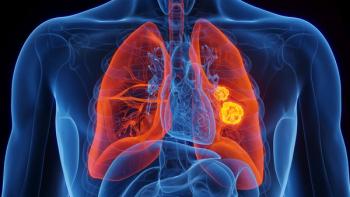
Worst States Based on Infectious Disease Incidence
A state's infectious disease incidence provides insight into the effectiveness of its public health system.
A state’s infectious disease incidence provides insight into the effectiveness of its public health system.
As a call to action for both communities and individuals, the United Health Foundation recently issued its “America’s Health Rankings Annual Report,” a state-by-state analysis of factors affecting the health of society. Some of these factors included rates of smoking, childhood immunizations, preventable hospitalizations, and infectious diseases.
While US health policy is geared toward addressing prevention and management of chronic conditions, infectious diseases also pose a major threat to vulnerable populations such as the very young and very old. This threat is made worse by increasing
The 3 specific infectious diseases considered in the United Health Foundation’s report were chlamydia, pertussis, and Salmonella. These diseases were selected because they are common and represent different transmission mechanisms, and therefore different prevention and treatment options.
Here are the state rankings for each of these 3 infectious diseases:
Chlamydia
Around 1.4 million cases of chlamydia were reported in 2014, which is a 2.8%
The 5 worst states based on the number of new cases of chlamydia are:
- Alaska (789.4 cases per 100,000 individuals)
- Louisiana (624.5 cases per 100,000 individuals)
- Alabama (611.0 cases per 100,000 individuals)
- New Mexico (587.3 cases per 100,000 individuals)
- Mississippi (585.1 cases per 100,000 individuals)
Pharmacists’ close and frequent contact with patients makes them ideal candidates for providing education and
The issue of
Pertussis
The United States has seen a
The 5 worst states ranked by number of new cases of pertussis are:
- Montana (66 cases per 100,000 individuals)
- Utah (45.8 cases per 100,000 individuals)
- Alaska (43.3 cases per 100,000 individuals)
- New Mexico (29.4 cases per 100,000 individuals)
- Colorado (27.3 cases per 100,000 individuals)
Amid these
The FDA
Salmonella
An estimated 1.2 million Salmonella infections occur annually, and 1 million of those infections are caused by food consumed in the United States.
The 5 worst states based on the number of new cases of Salmonella are:
- Florida (31.7 cases per 100,000 individuals)
- Mississippi (30.7 cases per 100,000 individuals)
- Louisiana (27.9 cases per 100,000 individuals)
- Hawaii (25.1 cases per 100,000 individuals)
- South Carolina (24.1 cases per 100,000 individuals)
It’s important for pharmacists to remember that patients seeking OTC remedies for gastrointestinal distress could be infected with Salmonella. Pharmacists should stay abreast of any FDA warnings about Salmonella and be aware of any widespread contamination that could be affecting patients.
Salmonella infection normally clears up on its own within 4 to 7 days.
Newsletter
Stay informed on drug updates, treatment guidelines, and pharmacy practice trends—subscribe to Pharmacy Times for weekly clinical insights.
















































































































































































































